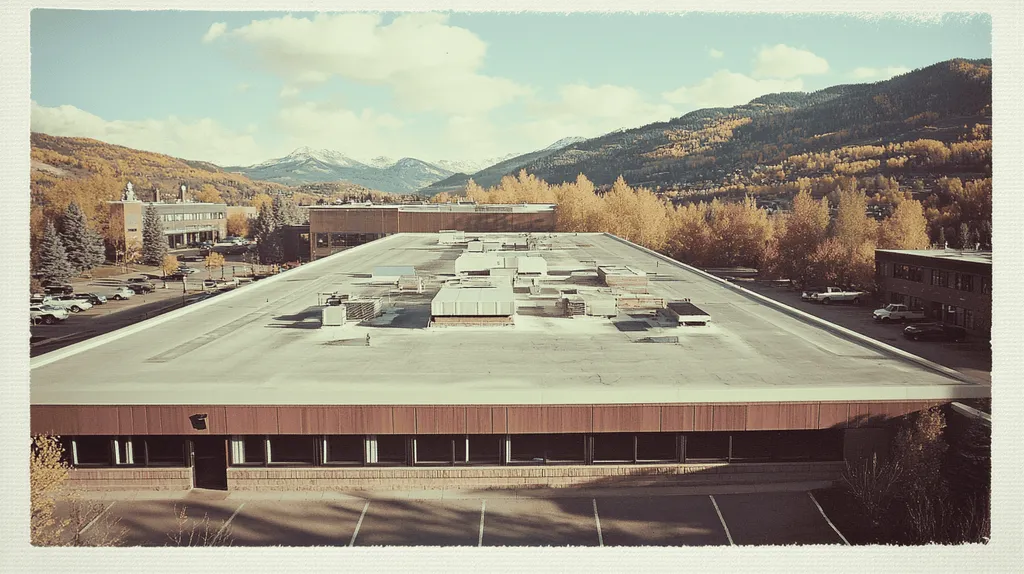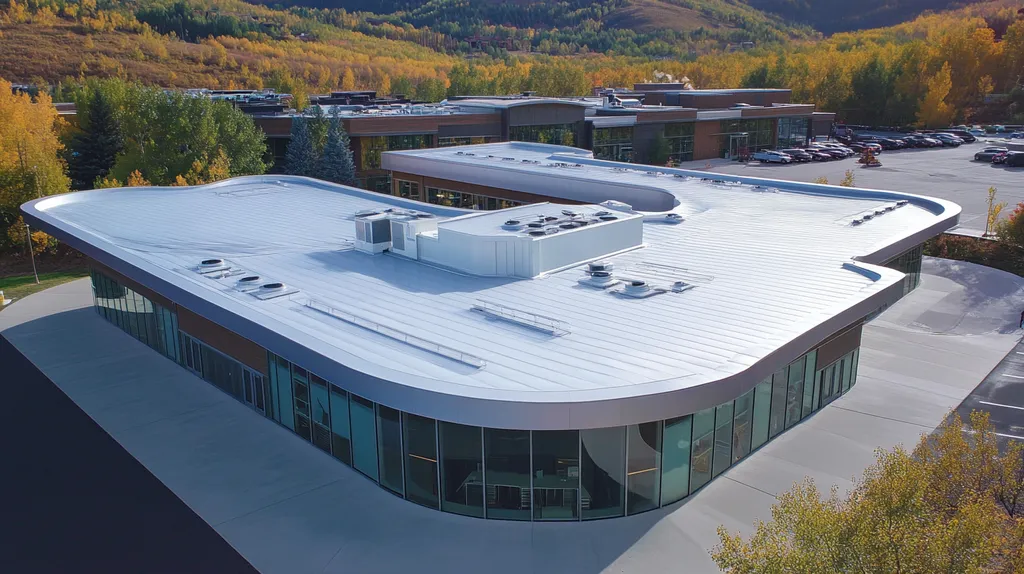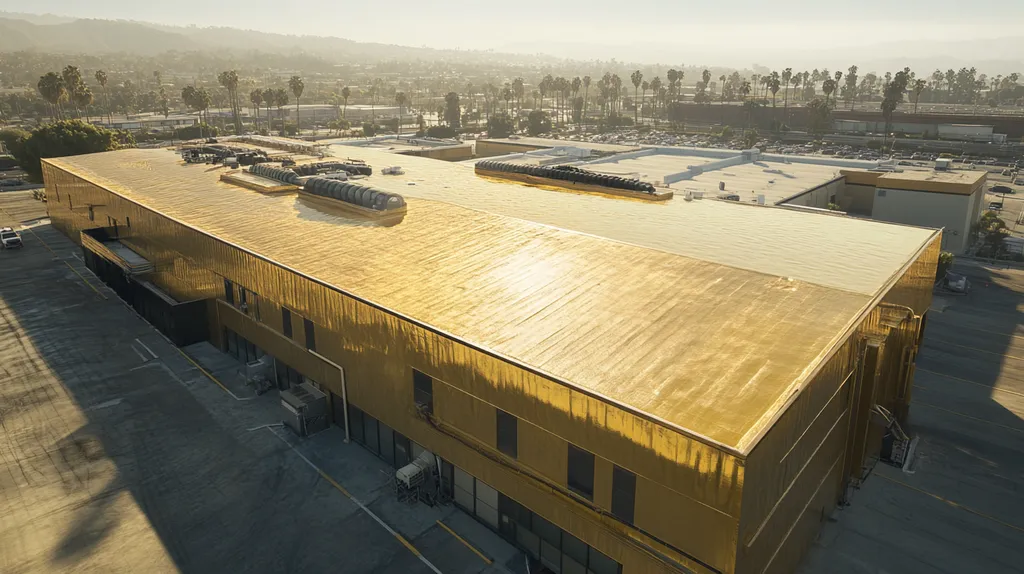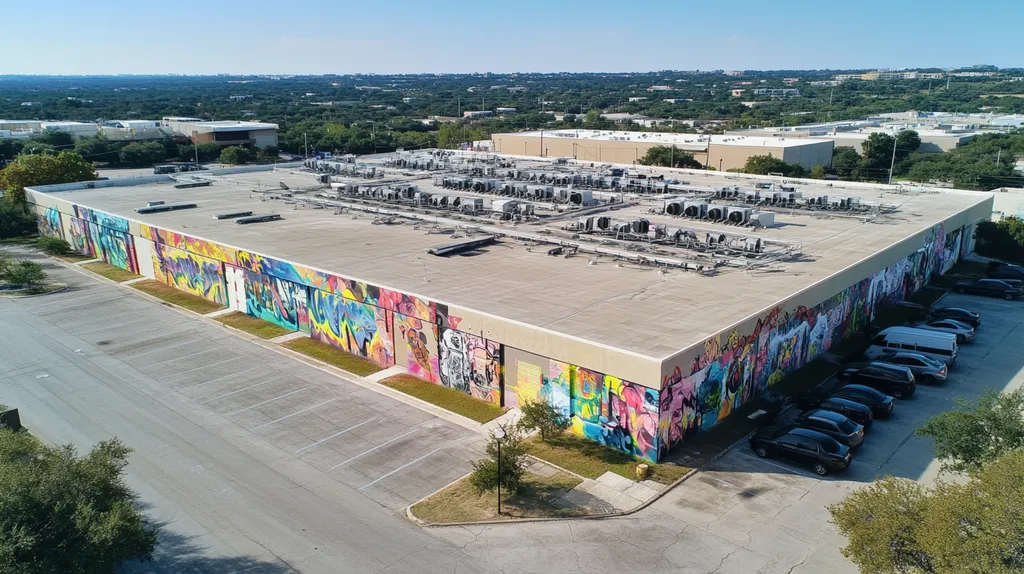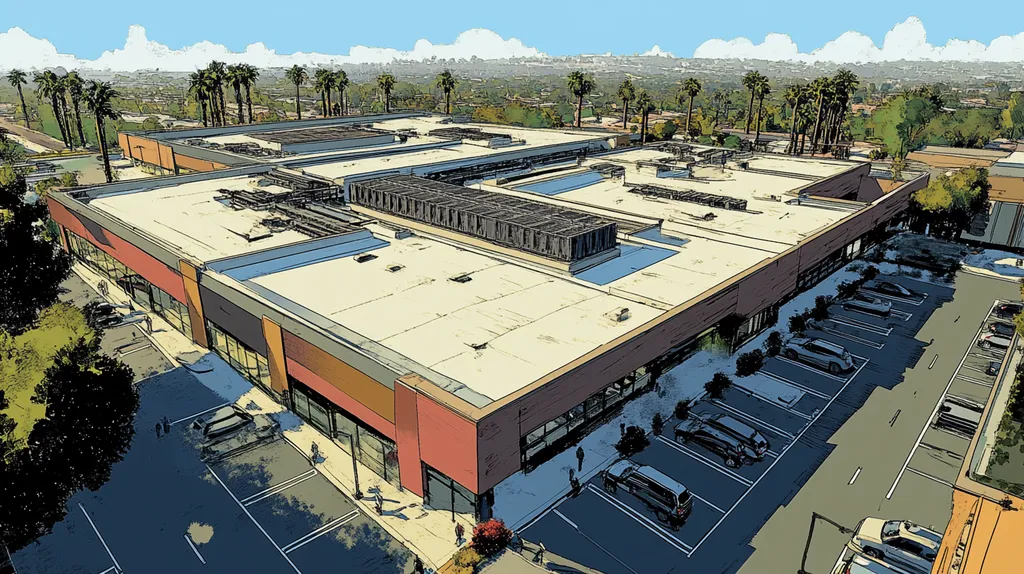Commercial roof failures cost businesses over $2 billion annually in repairs, lost inventory, and operational disruptions. Yet studies show that up to 85% of these catastrophic events could be prevented through proper inspection and maintenance protocols.
Modern roofing systems represent substantial investments, often exceeding $1 million for large facilities. Without systematic inspection programs, these assets can deteriorate rapidly, leading to premature failure and extensive collateral damage.
This comprehensive guide examines critical aspects of commercial roof inspection, from fundamental assessment principles to advanced monitoring technologies, providing facility managers with actionable strategies to protect their roofing investments.
SECTION 1: FUNDAMENTAL CONCEPTS
Commercial roof failures cost businesses billions annually in repairs, inventory damage, and operational disruptions. A single catastrophic leak can result in damages exceeding $100,000, yet many of these incidents are preventable through proper inspection and maintenance. Understanding the fundamentals of roof inspection enables property owners to protect their investments while extending roof lifespans by 25% or more.
Principles of Commercial Roof Inspection
Systematic roof inspections require a methodical evaluation of all roofing components, from membrane integrity to drainage systems. This structured approach ensures no critical areas are overlooked during assessment.
The NRCA recommends building managers inspect their roof systems at least twice per year, preferably in spring and fall, and after major weather events. Regular inspections combined with detailed documentation create a valuable history of roof performance and maintenance needs. (source: SFS USA)
Safety protocols must be established before any inspection begins. This includes checking access points, identifying potential hazards, and ensuring proper fall protection equipment is available and properly used.
Digital documentation tools have revolutionized inspection reporting. Photos, thermal imaging, and moisture readings provide objective data that helps track deterioration patterns and justify maintenance decisions.
Identifying Common Roof Defects
Surface deterioration often manifests through blistering, splitting, or ridging in the roofing membrane. These defects create entry points for moisture and accelerate overall system degradation.
Ponding water represents a serious threat to roof integrity. Areas holding water longer than 48 hours indicate drainage problems that can lead to membrane damage, increased load stress, and eventual leaks.
Flashing failures at roof penetrations, edges, and transitions account for nearly 80% of all roof leaks. Regular inspection of these critical areas helps prevent water infiltration at vulnerable points.
Seam separation in single-ply systems requires immediate attention. Even minor gaps can allow significant water penetration, leading to insulation damage and interior leaks.
Impact of Climate and Environment on Roofs
Temperature extremes cause materials to expand and contract, stressing seams and flashings. This thermal cycling accelerates aging and requires specific attention during inspections in variable climates.
UV exposure degrades most roofing materials over time. Southern and western roof slopes typically show accelerated weathering and may require more frequent inspection and maintenance.
Wind patterns affect both debris accumulation and moisture distribution across the roof surface. Understanding local wind conditions helps inspectors identify high-risk areas for damage.
Industrial emissions, salt air, and other environmental contaminants can significantly impact roof performance. These factors must be considered when establishing inspection frequencies and maintenance protocols.
SECTION 2: SYSTEM COMPONENTS
Commercial roofing systems represent substantial investments, with component failures potentially leading to hundreds of thousands in damage. Modern commercial roofs integrate multiple specialized elements that must work in harmony to protect the building. Understanding these critical components and their maintenance needs helps facility managers prevent catastrophic failures while maximizing the return on their roofing investment.
Membrane Types and Their Inspection Needs
Modern commercial roofing membranes come in several varieties, each with distinct maintenance requirements. TPO, EPDM, and PVC membranes dominate the market, offering different advantages and presenting unique inspection challenges.
TPO membranes require careful examination of seam integrity and surface wear patterns. Regular inspections should focus on areas of high foot traffic and locations where chemical exposure may compromise membrane integrity.
EPDM systems demonstrate exceptional durability but can suffer from shrinkage and seam separation over time. Inspection protocols must emphasize potential separation at termination points and around roof penetrations.
PVC roofing systems excel in chemical resistance but may become brittle with age. Particular attention should focus on areas where mechanical damage might occur, such as near HVAC servicing zones.
Critical Flashing and Edge Details
Flashing failures account for approximately 80% of all roof leaks, making these components critical inspection priorities. Deterioration often begins at transition points where different materials meet, such as wall-to-roof interfaces.
Metal flashings require evaluation for corrosion, proper attachment, and sealant integrity. Even minor gaps in these areas can allow significant water infiltration over time.
Edge details deserve special scrutiny as they experience the highest wind pressures and most severe weather exposure. Regular inspection should verify secure attachment and proper counter-flashing installation.
Expansion joint covers and termination bars must maintain watertight seals while accommodating building movement. These components should be checked for proper attachment and signs of stress.
Drainage Systems and Roof Penetrations
Effective drainage systems prevent costly membrane damage and structural overloading. Regular inspections should verify that internal drains, scuppers, and gutters maintain proper flow capacity and remain free from obstruction.
NRCA recommends building managers inspect their roof systems at least twice per year, with additional checks following major weather events. Regular maintenance should include unclogging gutters and drains, pruning nearby trees, and promptly removing standing water to prevent damage. (source: SFS USA)
Roof penetrations require specialized flashing systems that must maintain watertight integrity while accommodating thermal movement. These areas should be regularly inspected for sealant deterioration and mechanical damage.
Pitch pockets and other sealed penetrations demand verification of proper fill levels and material condition. Even minor separations can allow significant water infiltration over time.
SECTION 3: IMPLEMENTATION METHODS
Effective roof maintenance requires systematic inspection protocols that combine visual assessment, advanced diagnostics, and detailed documentation. Studies show that up to 80% of commercial roof failures could be prevented through proper inspection and maintenance programs. By implementing comprehensive inspection methods, facility managers can extend roof life by 25-40% while dramatically reducing emergency repair costs and protecting valuable building assets.
Visual and Instrumental Inspection Techniques
Visual inspections form the foundation of any roof assessment program. Trained inspectors systematically evaluate the entire roof surface, looking for obvious defects like blisters, splits, or membrane deterioration.
Modern instrumental analysis complements visual inspection through technologies like infrared scanning and electronic leak detection. These tools can identify subsurface moisture and membrane breaches before they manifest as visible problems.
Core sampling provides definitive analysis of roof system composition and condition when needed. This destructive testing method requires immediate repair but delivers crucial information about insulation saturation and membrane deterioration.
Photographic documentation using high-resolution imaging helps track deterioration patterns over time. Drone technology now enables safer, more comprehensive visual documentation of large roof areas while reducing inspection time.
Documentation and Condition Rating Systems
Standardized documentation systems create valuable historical records of roof performance and maintenance needs. Digital platforms now enable real-time data entry and instant access to inspection histories.
Condition rating scales provide objective measures of roof system status. These typically use 1-5 or 1-10 scales to rate membrane condition, drainage performance, and overall system integrity.
CAD-based mapping helps visualize and track problem areas across the roof surface. These digital drawings become living documents that record repair history and highlight patterns of deterioration.
Photo documentation must follow consistent protocols for maximum value. Images should include wide views for context and close-ups of specific defects, all properly labeled and dated.
Scheduling and Frequency of Inspections
Inspection timing significantly impacts maintenance effectiveness. Spring inspections identify winter damage while fall inspections ensure readiness for severe weather.
High-traffic areas and locations around mechanical equipment require more frequent evaluation. Monthly walkthrough inspections of these zones can prevent minor issues from escalating.
Emergency inspections must follow any severe weather event or reported leak. Quick response prevents minor storm damage from developing into major system failures.
Warranty compliance often requires documented inspections at specific intervals. Maintaining these inspection schedules protects warranty coverage while ensuring optimal system performance.
SECTION 4: MAINTENANCE REQUIREMENTS
Effective maintenance of commercial roofing systems directly impacts both building protection and operational costs. Studies show that neglected roofs typically last only 10-15 years, while properly maintained systems often exceed 25 years of service. Understanding and implementing proper maintenance protocols helps facility managers protect their substantial roofing investments while preventing catastrophic failures that can cost hundreds of thousands in repairs and business interruption.
Routine Cleaning and Debris Removal
Regular cleaning and debris removal form the foundation of effective roof maintenance. Even small amounts of accumulated debris can trap moisture against roofing materials, accelerating deterioration and creating conditions for biological growth.
Drainage systems require particular attention during cleaning operations. Clogged drains, gutters, and scuppers quickly lead to ponding water, which can add dangerous structural loads while degrading roofing materials.
The NRCA recommends building managers inspect and clean their roof systems at least twice per year, with additional attention following major weather events. This includes removing debris, pruning nearby trees, and ensuring proper drainage to prevent water accumulation. (source: SFS USA)
Mechanical equipment areas demand enhanced cleaning protocols. Oil, grease, and other contaminants from HVAC units can degrade roofing materials if not regularly removed.
Leak Detection and Immediate Repairs
Early leak detection dramatically reduces repair costs and prevents collateral damage to building interiors. Regular inspections should focus on high-risk areas like penetrations, seams, and flashings where most leaks originate.
Interior signs of leakage require immediate investigation and repair. Water stains, drips, or unusual odors often indicate roofing problems that will worsen without intervention.
Modern leak detection methods combine visual inspection with advanced technologies. Infrared scanning and electronic leak detection can identify hidden moisture problems before visible damage occurs.
Documentation of leak locations and repairs helps identify patterns that may indicate systemic problems requiring broader intervention. This data proves invaluable for planning maintenance budgets and timing replacement decisions.
Weather-Related Damage Response
Severe weather events demand rapid response protocols to prevent minor damage from escalating into major failures. High winds can loosen flashings and create entry points for water, while hail impacts may not show immediate visible damage.
Post-storm inspections should evaluate all roofing components systematically. Even small gaps in flashings or minor membrane damage can allow significant water infiltration during subsequent weather events.
Temporary repairs may be necessary to prevent further damage while permanent solutions are planned. These emergency measures require careful documentation and follow-up to ensure they don’t become forgotten long-term fixes.
Building owners should maintain relationships with qualified roofing contractors who can respond quickly to weather-related emergencies. Having these resources identified in advance prevents delays in critical repair situations.
SECTION 5: PERFORMANCE METRICS
Effective measurement of commercial roof performance directly impacts building protection and operational costs. Studies show that systematic performance tracking can extend roof life by up to 21 years compared to 7-10 years for unmeasured systems. Understanding and implementing key metrics helps facility managers protect their roofing investments while preventing failures that can cost hundreds of thousands in repairs and business interruption.
Criteria for Roof Condition Assessment
Condition assessment begins with establishing clear, measurable benchmarks across key performance indicators. These include membrane integrity, insulation efficiency, drainage performance, and structural stability.
Regular monitoring must include surface deterioration metrics like blistering, cracking, and separation at seams. Even minor defects can indicate larger underlying issues that require immediate attention.
Advanced diagnostic tools now enable precise measurement of roof system performance. Infrared scanning quantifies insulation saturation while electronic testing pinpoints membrane breaches with millimeter accuracy.
Digital documentation creates searchable performance histories that reveal deterioration patterns. This data drives informed decisions about maintenance timing and helps optimize repair investments.
Indicators of Membrane and Structural Integrity
Membrane performance evaluation requires systematic measurement of material thickness, seam strength, and surface wear. Regular testing helps identify areas of accelerated deterioration before failures occur.
Load-bearing capacity must be regularly assessed, particularly in areas prone to ponding or equipment placement. Deflection measurements can reveal early signs of structural stress.
Adhesion testing at critical points verifies membrane attachment strength and identifies potential separation risks. This includes both field areas and critical flashings where most leaks originate.
Core sampling provides definitive data on system composition and condition when needed. While requiring immediate repair, these tests deliver crucial information about insulation saturation and membrane deterioration rates.
Measuring Drainage Efficiency and Water Management
Effective drainage assessment requires measuring water evacuation rates across the entire roof surface. Areas retaining water longer than 48 hours indicate system deficiencies requiring correction.
Flow capacity testing verifies that drains, scuppers, and gutters maintain design performance levels. Regular measurement ensures drainage systems can handle peak rainfall events without overload.
The NRCA recommends building managers routinely evaluate drainage performance through systematic inspection and testing. This includes monitoring water removal rates, checking for debris accumulation, and ensuring proper slope maintenance for effective drainage. (source: SFS USA)
Slope verification using laser measurement ensures proper drainage angles are maintained. Even minor settling can create low spots that compromise water management effectiveness.
SECTION 6: OPTIMIZATION STRATEGIES
Optimizing commercial roof performance represents a critical challenge for facility managers, with ineffective strategies costing businesses millions annually in premature failures and emergency repairs. Studies show that buildings implementing comprehensive optimization programs extend roof lifespans by 40-50% while reducing maintenance costs by up to 60%. By adopting data-driven approaches to maintenance planning, leveraging advanced detection technologies, and making strategic repair decisions, organizations can transform their roofing assets from potential liabilities into reliable building protection systems.
Preventative Maintenance Planning
Effective preventative maintenance requires systematic planning that aligns inspection schedules with environmental demands and building usage patterns. Performance data shows that buildings with structured maintenance programs experience 70% fewer emergency repairs while extending roof life by decades.
The NRCA recommends building managers inspect their roof systems at least twice per year, with additional checks following major weather events. Regular maintenance should include managing roof loads, removing debris, unclogging gutters and drains, and promptly addressing standing water to prevent premature failure. (source: SFS USA)
Digital maintenance tracking platforms now enable precise scheduling and documentation of all roof-related activities. These systems generate automatic maintenance alerts while building comprehensive performance histories that guide future interventions.
Resource allocation becomes more efficient when maintenance activities are bundled strategically. Combining routine inspections with preventative repairs reduces mobilization costs while ensuring all potential issues receive proper attention.
Integrating Technology for Early Defect Detection
Modern detection technologies have revolutionized how facility managers identify and track roofing defects. Thermal imaging, moisture mapping, and drone-based photogrammetry enable comprehensive system evaluation without compromising worker safety.
Automated monitoring systems now provide continuous oversight of critical roof conditions. These platforms track membrane temperatures, moisture levels, and structural deflection, alerting managers to developing problems before visible damage occurs.
Integration of artificial intelligence with inspection data helps identify deterioration patterns and predict potential failures. This predictive capability enables facility managers to address underlying issues before they escalate into major repairs.
Mobile documentation tools streamline the collection and analysis of inspection data. Digital platforms instantly share findings with stakeholders while building searchable histories that inform maintenance decisions.
Cost-Benefit Analysis of Repair vs. Replacement
Strategic evaluation of repair versus replacement options demands comprehensive analysis of both immediate costs and long-term implications. Modern analysis tools factor in energy efficiency, warranty coverage, and potential business disruption when comparing intervention strategies.
Life-cycle cost modeling helps quantify the true expense of maintaining aging roof systems. These calculations often reveal that targeted replacement of deteriorating sections delivers better long-term value than continued repairs.
Energy performance improvements from system upgrades can offset replacement costs significantly. New roofing materials and improved insulation often reduce HVAC loads by 15-25%, generating substantial operational savings.
Phased replacement strategies enable organizations to distribute capital expenses while systematically upgrading their roofing assets. This approach minimizes business disruption while ensuring critical areas receive priority attention.
The Bottom Line
Commercial roof failures cost businesses over $2 billion annually, yet up to 85% of these catastrophic events are preventable through proper inspection and maintenance.
Modern roofing technology, combined with systematic inspection protocols, now enables facility managers to extend roof lifespans by 40-50% while reducing maintenance costs by up to 60%.
The key to success lies in transitioning from reactive repairs to proactive maintenance, leveraging advanced detection systems, and maintaining detailed performance documentation.
Organizations that implement comprehensive inspection programs, supported by regular preventative maintenance, transform their roofing systems from potential liabilities into reliable assets that protect operations for decades while optimizing facility budgets.
The choice is clear: invest in systematic roof inspection and maintenance now, or risk paying exponentially more in emergency repairs and business disruption later.
FREQUENTLY ASKED QUESTIONS
Q. What are the costs associated with commercial roof failures?
A. Commercial roof failures can lead to significant costs, including repairs, inventory losses, and operational disruptions. A single severe leak can potentially cause damages exceeding $100,000. Many of these costs can be mitigated through regular inspections and timely maintenance.
Q. How do I inspect my commercial roof components?
A. Inspecting a commercial roof involves examining its components, including membranes, flashings, and drainage systems. Focus on areas that experience high foot traffic or potential chemical exposure. Consistent checks can prevent minor issues from escalating into costly repairs.
Q. What inspection methods should I use for an industrial roof?
A. For an industrial roof, combine visual inspections with advanced technologies like infrared scanning. These methods help identify subsurface issues before they become visible problems. Document findings thoroughly for informed decision-making on maintenance and repairs.
Q. How often should I perform maintenance on my commercial roof?
A. Routine maintenance for a commercial roof should occur at least twice a year, preferably in spring and fall, and after any severe weather. Regular upkeep extends roof lifespan and helps prevent costly repairs from occurring due to neglect.
Q. What metrics should I track for roof performance?
A. Track key performance indicators like membrane integrity, insulation efficiency, and drainage effectiveness. Regular assessments provide valuable insights into the condition of your roof, allowing timely interventions that can prevent premature failures.
Q. How can I optimize maintenance strategies for my commercial roof?
A. Optimize maintenance by implementing a preventative maintenance plan and adopting advanced detection technologies. Analyze data from inspections to automate scheduling and prioritize repairs, extending lifetime and reducing expenses associated with unexpected failures.
Q. What should I do in case of a leak in my commercial roof?
A. If you suspect a leak, investigate immediately to prevent further damage. Inspect for visible signs, such as water stains or drips, and employ advanced leak detection methods if necessary. Address repairs promptly to mitigate potential interior damage.

